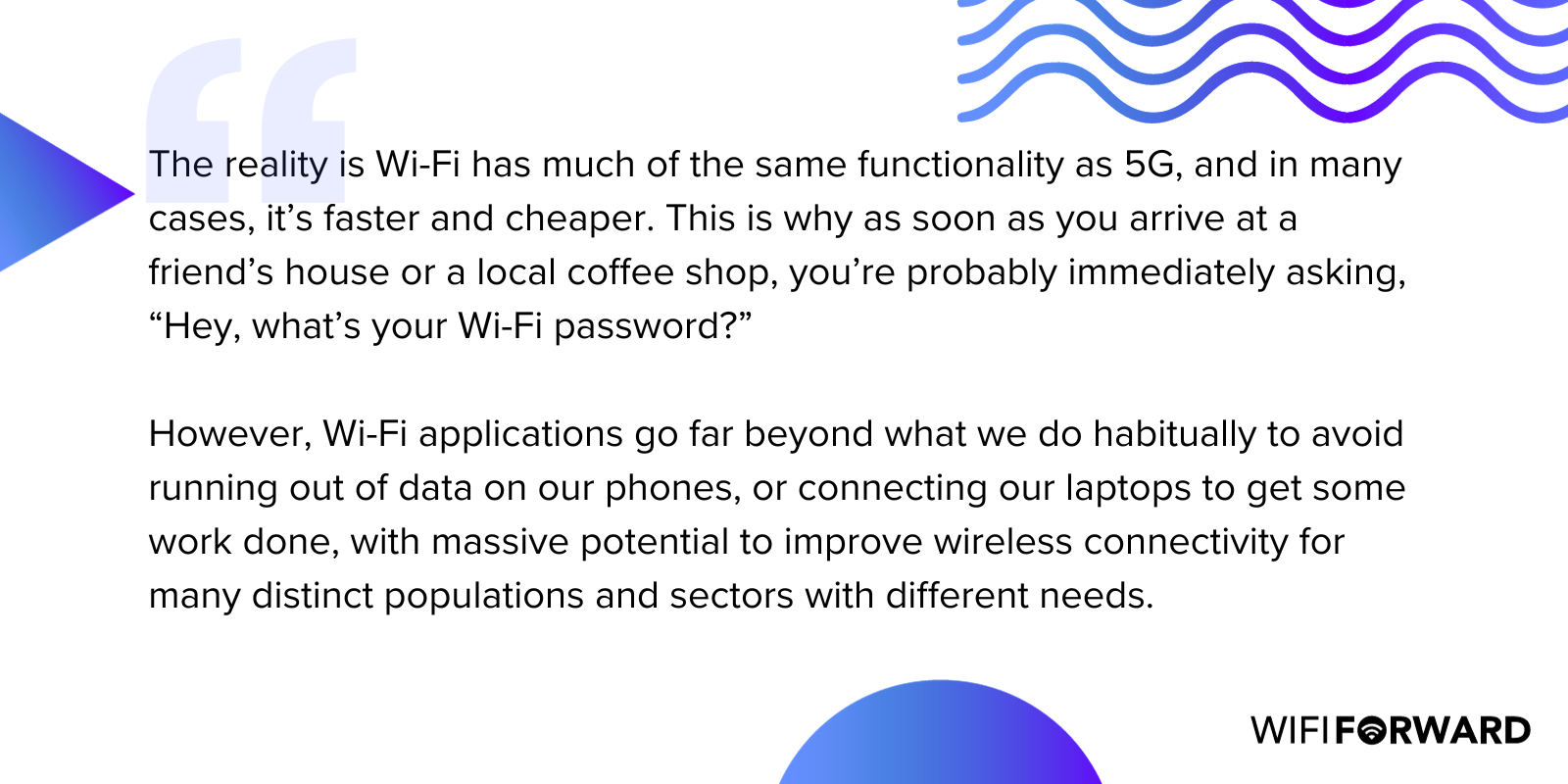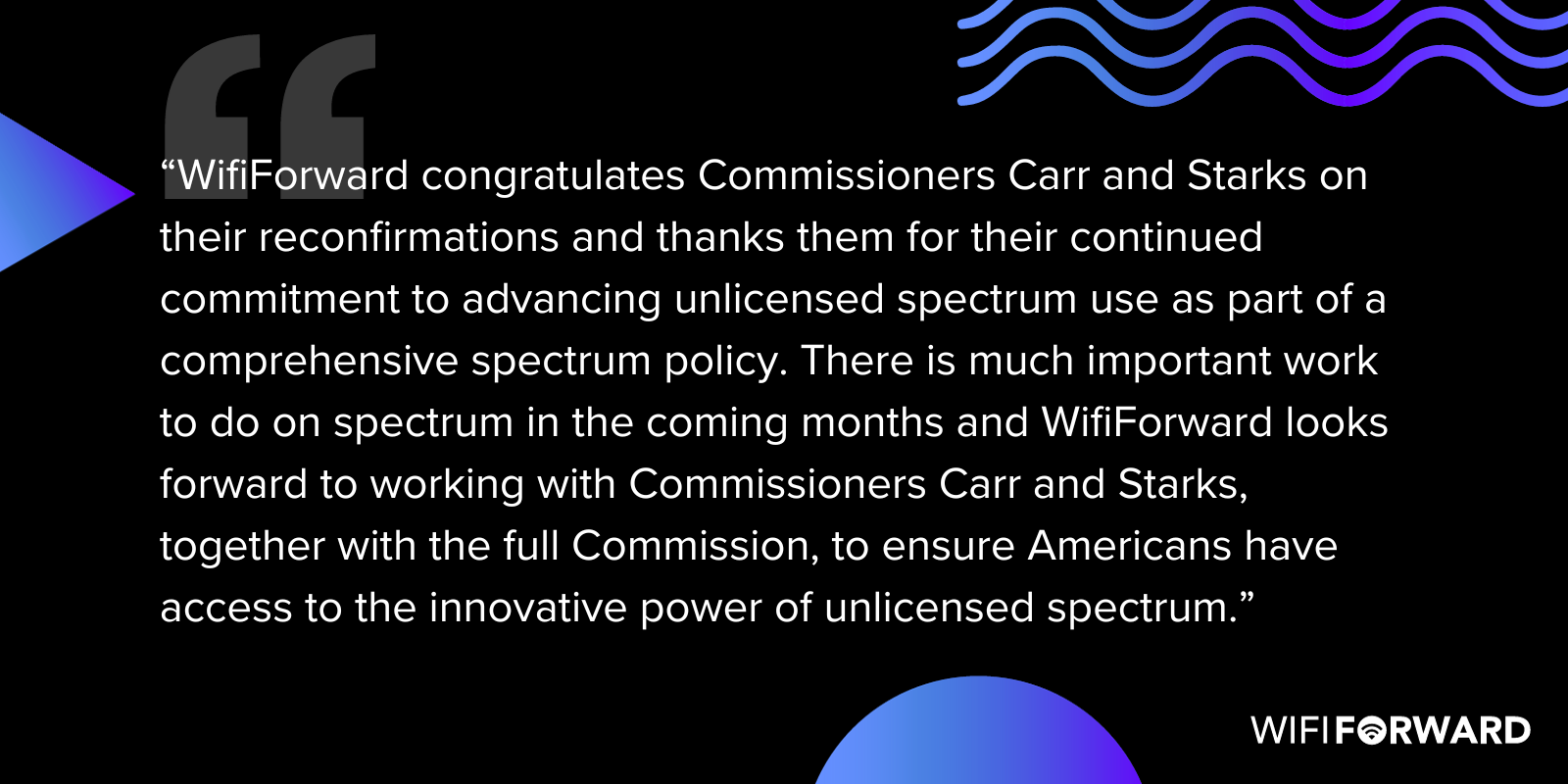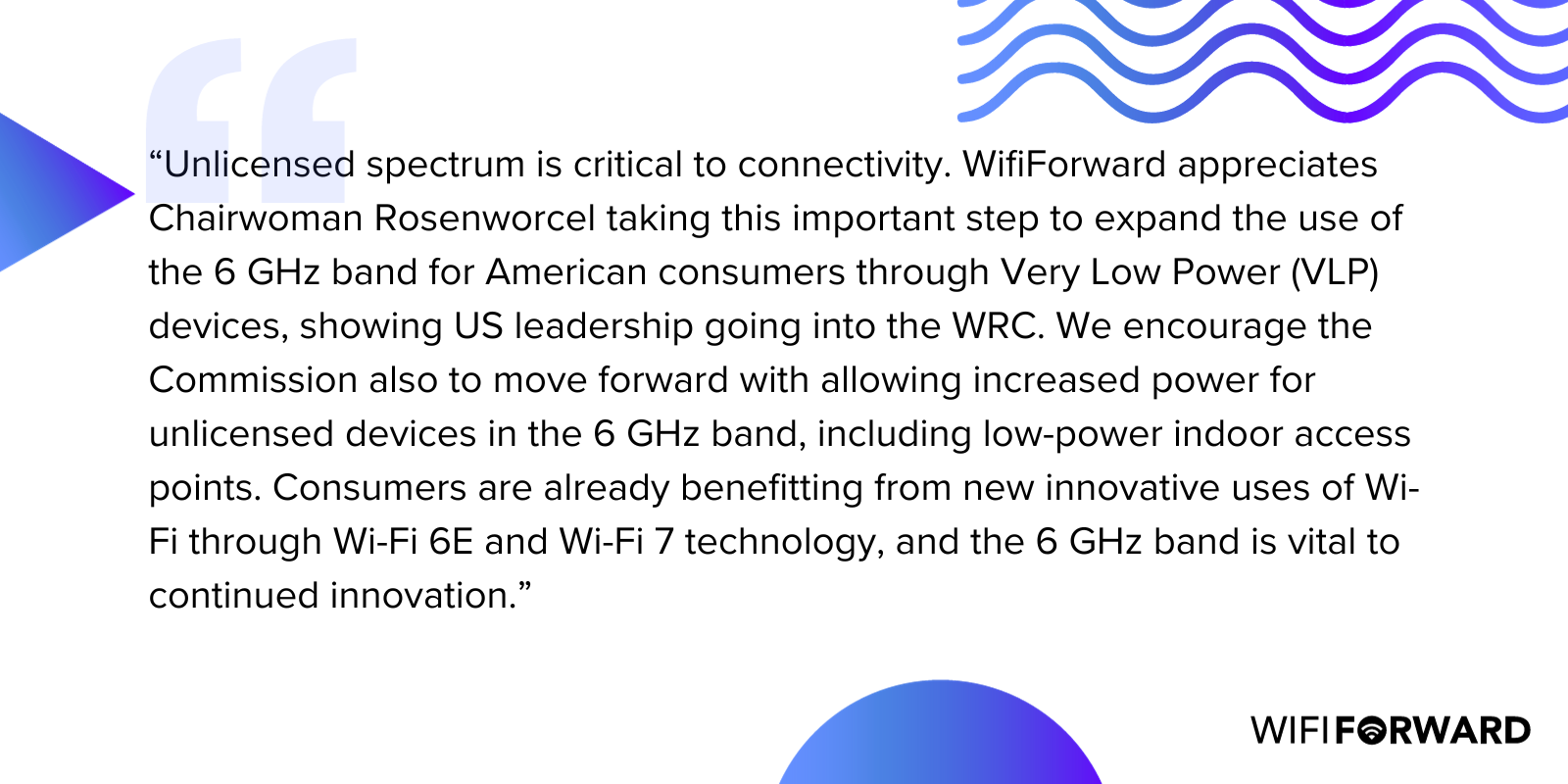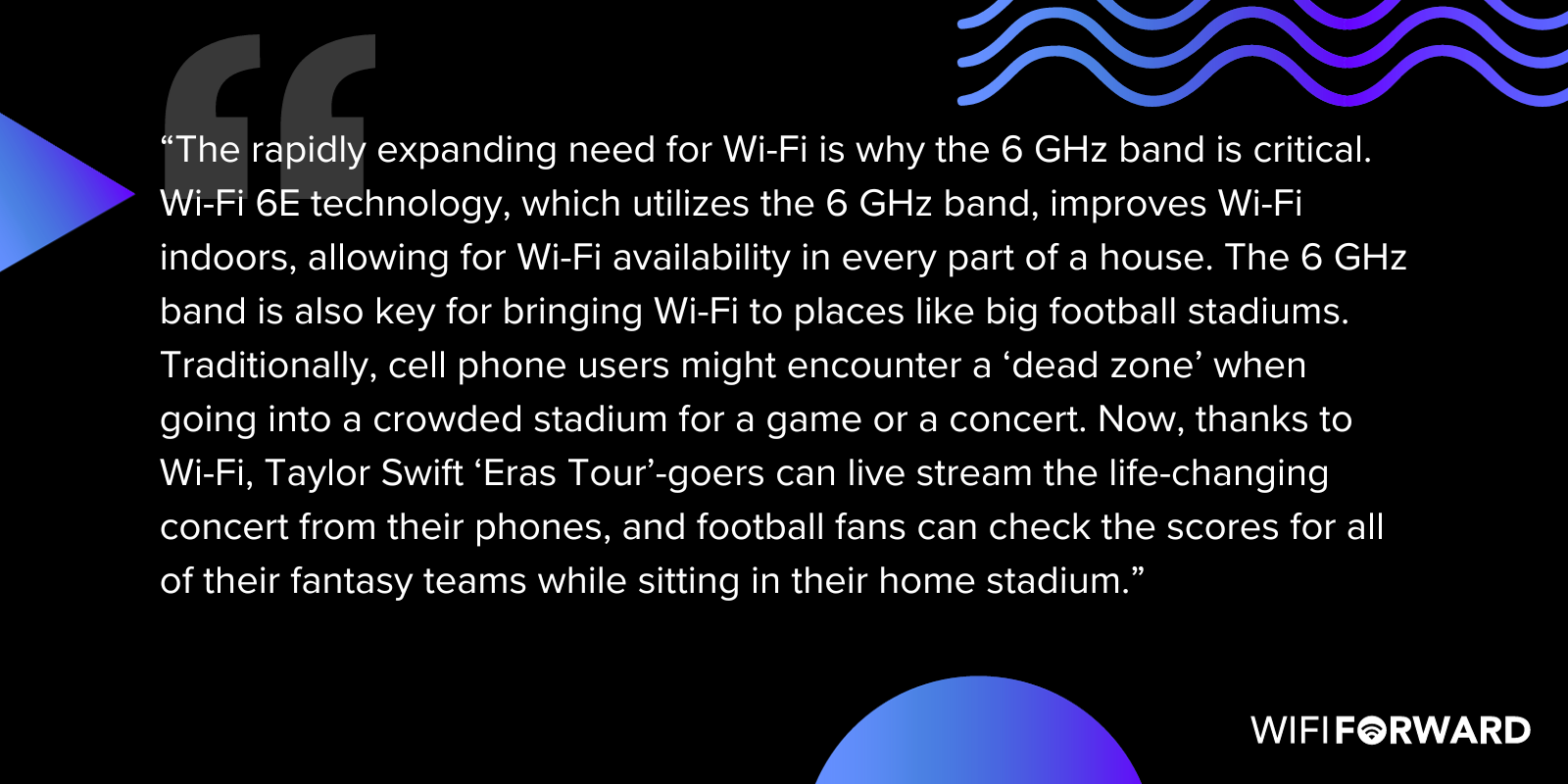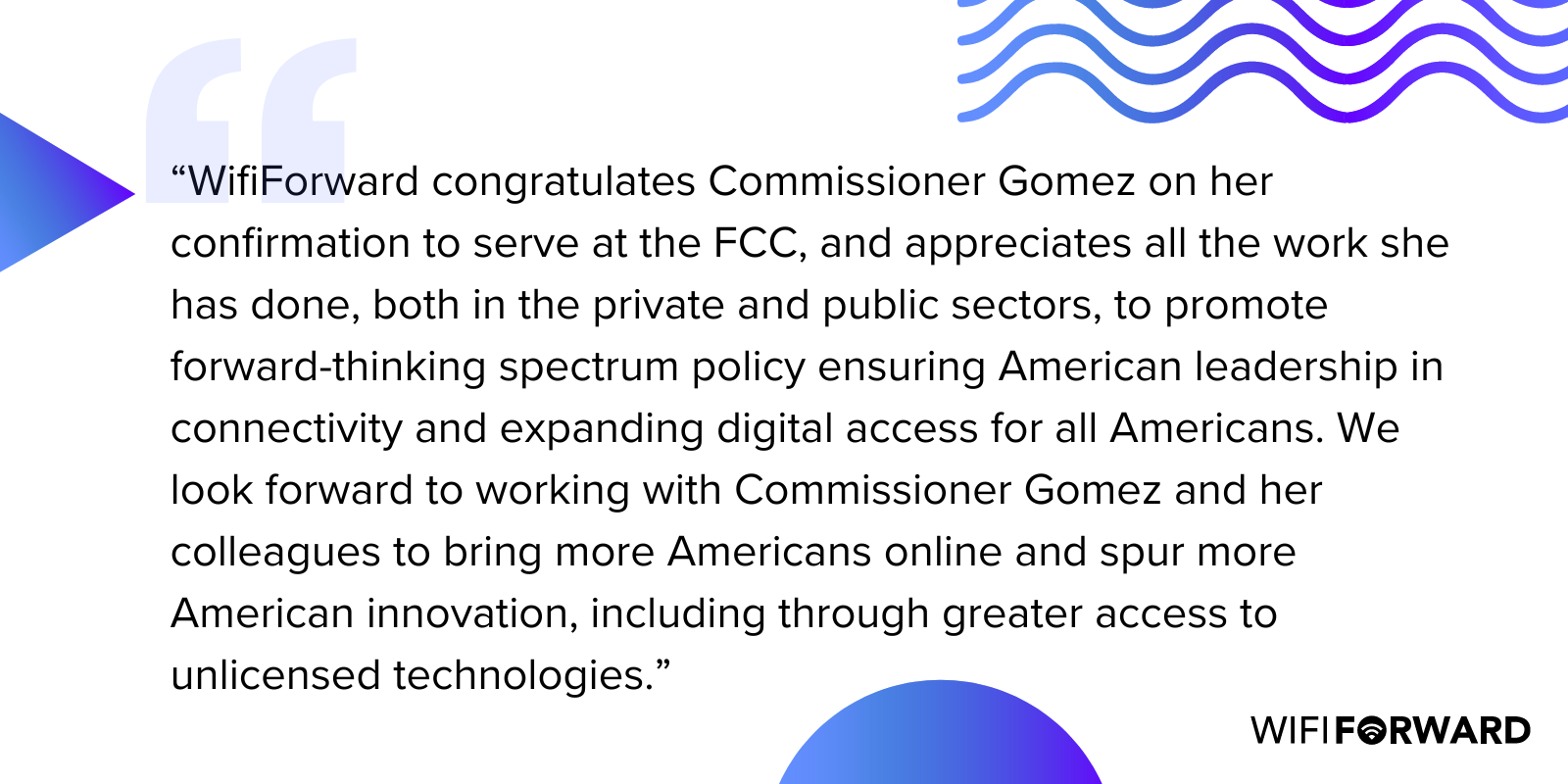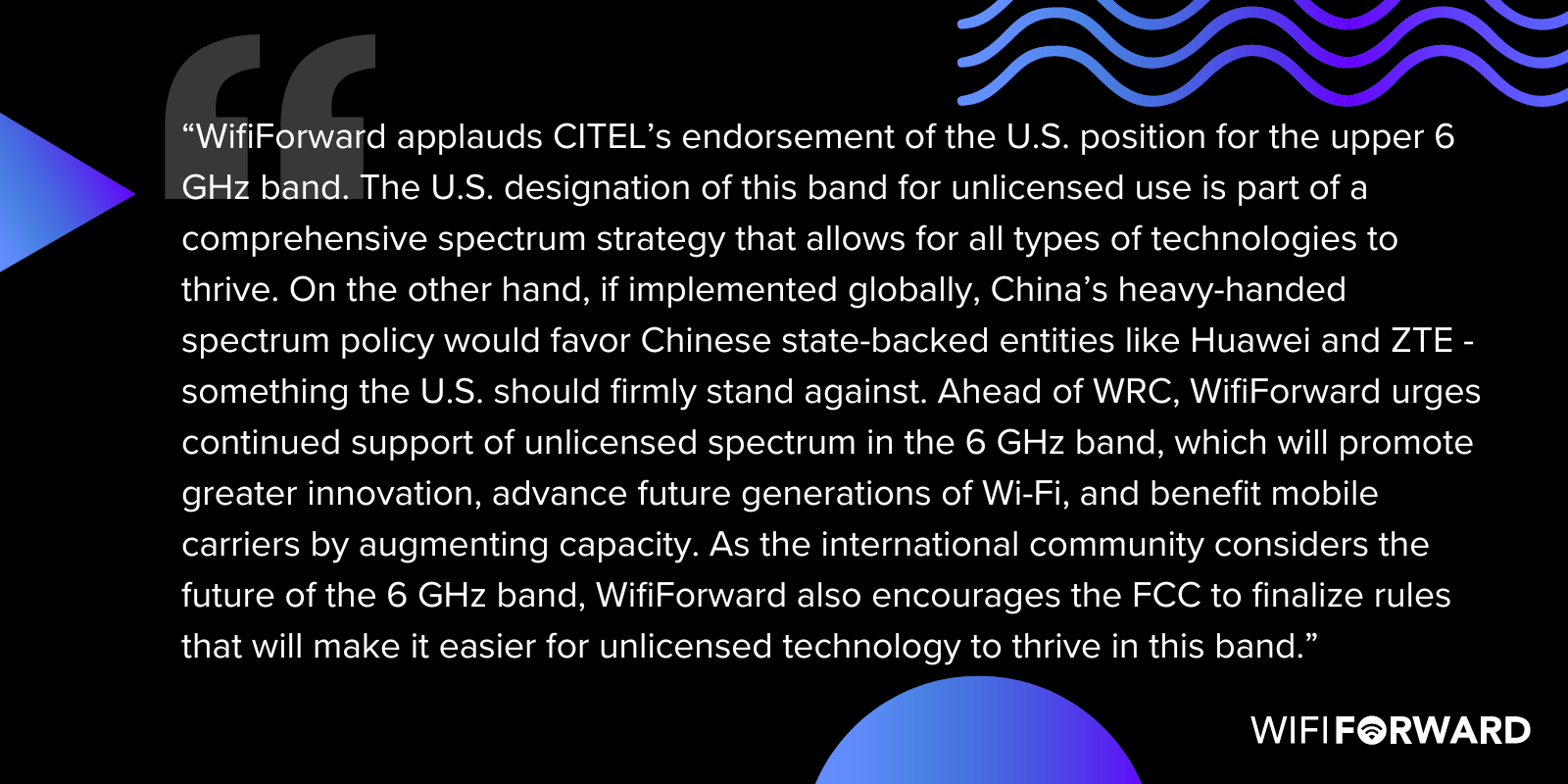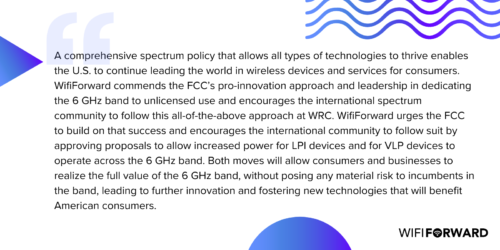These days, we use Wi-Fi for just about everything. Wi-Fi equips us to enjoy the simple pleasures of our day-to-day, from streaming our favorite podcasts and playlists to helping us work at the office or in the comfort of our homes. The mobile industry admits that at least 56% of cellular data is “offloaded” onto Wi-Fi – and we estimate that number to be much higher.
The reality is Wi-Fi has much of the same functionality as 5G, and in many cases, it’s faster and cheaper. This is why as soon as you arrive at a friend’s house or a local coffee shop, you’re probably immediately asking, “Hey, what’s your Wi-Fi password?”
Read More “Anything 5G Can Do, Wi-Fi Can Do Better”
Washington, D.C. – Today, WifiForward released the following statement applauding the Senate’s reconfirmation of Brendan Carr and Geoffrey Starks as Commissioners of the Federal Communications Commission (FCC):
“WifiForward congratulates Commissioners Carr and Starks on their reconfirmations and thanks them for their continued commitment to advancing unlicensed spectrum use as part of a comprehensive spectrum policy. There is much important work to do on spectrum in the coming months and WifiForward looks forward to working with Commissioners Carr and Starks, together with the full Commission, to ensure Americans have access to the innovative power of unlicensed spectrum.” Read More “WifiForward Statement on Reconfirmation of Commissioners Carr and Starks to FCC”
The following statement can be attributed to WiFiForward:
“Unlicensed spectrum is critical to connectivity. WifiForward appreciates Chairwoman Rosenworcel taking this important step to expand the use of the 6 GHz band for American consumers through Very Low Power (VLP) devices, showing US leadership going into the WRC. We encourage the Commission also to move forward with allowing increased power for unlicensed devices in the 6 GHz band, including low-power indoor access points. Consumers are already benefitting from new innovative uses of Wi-Fi through Wi-Fi 6E and Wi-Fi 7 technology, and the 6 GHz band is vital to continued innovation.”
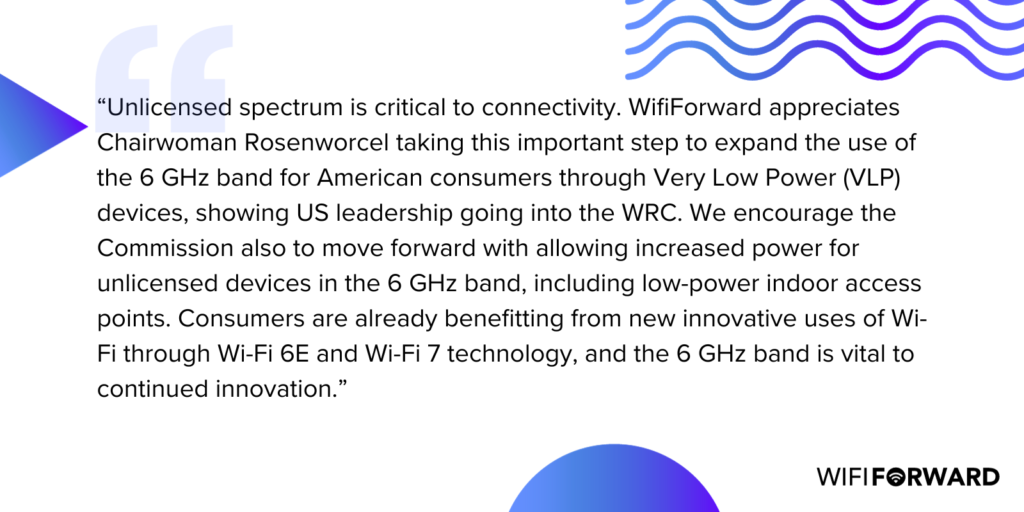
The evolution of Wi-Fi is even more impressive than the average consumer might realize. Thirty years ago, when the FCC designated a handful of underused frequencies for unlicensed use, no one thought these “junk bands” would lead to anything. Instead, Wi-Fi – the premiere unlicensed technology and an American success story – is now ubiquitous. According to a recent study from the Wi-Fi Alliance, four in five households said their Wi-Fi use is expanding, and most expect Wi-Fi to be available in every room of their house. And beyond the home, users expect Wi-Fi everywhere from a plane, to their cars, and even big stadiums. Read More “No Need for Bad Blood on Burdensome FCC Rules”
Washington, D.C. – Today, WifiForward released the following statement applauding the Senate’s confirmation of Anna Gomez to serve as Commissioner on the Federal Communications Commission (FCC):
“WifiForward congratulates Commissioner Gomez on her confirmation to serve at the FCC, and appreciates all the work she has done, both in the private and public sectors, to promote forward-thinking spectrum policy ensuring American leadership in connectivity and expanding digital access for all Americans. We look forward to working with Commissioner Gomez and her colleagues to bring more Americans online and spur more American innovation, including through greater access to unlicensed technologies.”
###
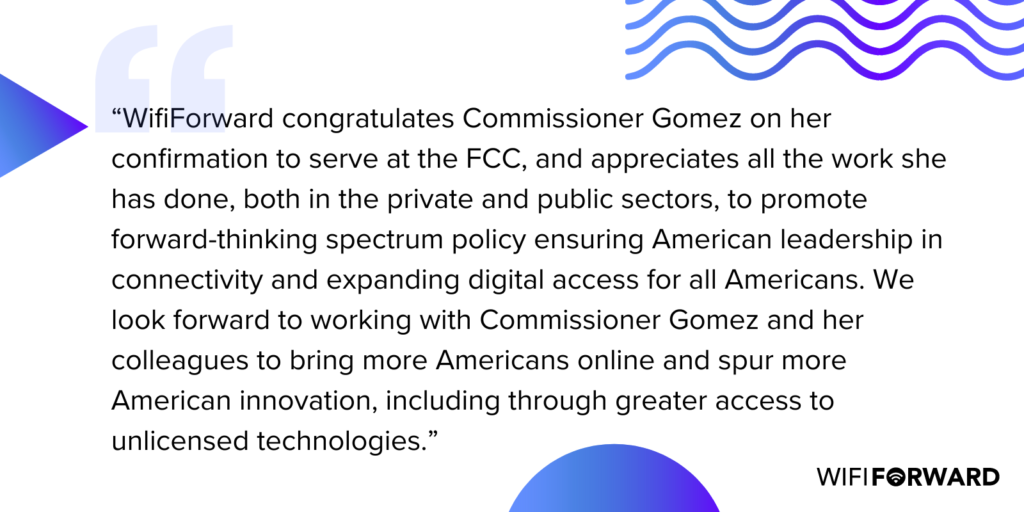
The following statement can be attributed to WifiForward:
“WifiForward applauds CITEL’s endorsement of the U.S. position for the upper 6 GHz band. The U.S. designation of this band for unlicensed use is part of a comprehensive spectrum strategy that allows for all types of technologies to thrive. On the other hand, if implemented globally, China’s heavy-handed spectrum policy would favor Chinese state-backed entities like Huawei and ZTE – something the U.S. should firmly stand against. Ahead of WRC, WifiForward urges continued support of unlicensed spectrum in the 6 GHz band, which will promote greater innovation, advance future generations of Wi-Fi, and benefit mobile carriers by augmenting capacity. As the international community considers the future of the 6 GHz band, WifiForward also encourages the FCC to finalize rules that will make it easier for unlicensed technology to thrive in this band.”

The following statement can be attributed to WifiForward:
“A comprehensive spectrum policy that allows all types of technologies to thrive enables the U.S. to continue leading the world in wireless devices and services for consumers. WifiForward commends the FCC’s pro-innovation approach and leadership in dedicating the 6 GHz band to unlicensed use and encourages the international spectrum community to follow this all-of-the-above approach at WRC. WifiForward urges the FCC to build on that success and encourages the international community to follow suit by approving proposals to allow increased power for LPI devices and for VLP devices to operate across the 6 GHz band. Both moves will allow consumers and businesses to realize the full value of the 6 GHz band, without posing any material risk to incumbents in the band, leading to further innovation and fostering new technologies that will benefit American consumers.” Read More “WifiForward Statement on 6 GHz Band Ahead of WRC”
This year, WifiForward celebrated World WiFi Day with “Moving WiFi Forward: The Value of Unlicensed and Shared Spectrum” an event on Capitol Hill. In the ever-evolving landscape of wireless connectivity, an effective spectrum policy is crucial for achieving national goals and ensuring equitable access to the internet. Read More “World WiFi Day 2023 – Moving WiFi Forward: The Value of Unlicensed and Shared Spectrum”
WifiForward congratulates Anna Gomez on her nomination and Commissioners Carr and Starks on their renominations. Ms. Gomez’s experience at the FCC, NTIA, in international negotiations and in the private sector positions her well to advance a comprehensive and forward-looking spectrum policy for the U.S. If confirmed, we look forward to working with these candidates and all five members of the Commission to expand wireless broadband, spur economic growth and advance innovation through a spectrum policy that furthers coexistence technologies (like unlicensed and shared-licensed services) and exclusive technologies. Read More “WifiForward Statement on President Biden’s Nominations to the FCC”
The following statement can be attributed to WifiForward:
As WifiForward noted in our comments to NTIA for the National Spectrum Strategy, a balanced, comprehensive spectrum policy includes CBRS-like models of shared licensing to promote innovation and competition that enable commercial license holders and government functions to coexist instead of forcing government users to relocate to entirely different spectrum bands. Read More “WifiForward on NTIA’s Request for Comments on the CBRS Framework”

